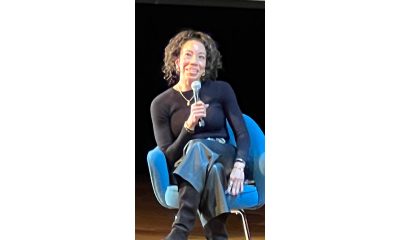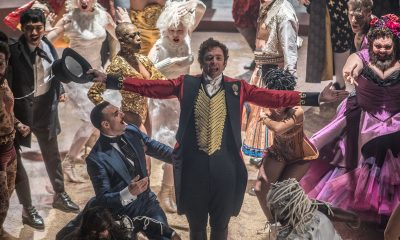Galleries
SPRING ARTS PREVIEW GALLERIES: Artistic ‘Anticipation’
Spring exhibits vary in medium, subject, scale and scope


‘Day’s End’ by Barbara French Pace. (Photo courtesy Waverly Street Gallery)
Touchstone Gallery (901 New York Ave., N.W.) hosts “Sprout” in galleries A and C, with member artists presenting works of color and pattern illuminated by spring light.
“Color: Painting by Mary D. Ott” in Gallery B is a new series of paintings created using embroidery yarn dipped in acrylic paint. Both exhibits take place from March 4-29, with an opening reception March 6 from 6-8:30 p.m. and coffee and cake on March 22 from 2-4 p.m.
In April, the gallery hosts “Connect/Disconnect,” featuring new paintings by Marcia Coppel, as well as “Slow Walking in New York,” a collection of photographs in which the artist uses his own disability advantageously to look at things slowly on the streets of New York City. Both April exhibits are open from April 1-26, with an opening reception April 10 from 6-8:30 p.m. and an encore reception April 25 from 2-4 p.m.
Foundry Gallery (1314 18th St., N.W.) hosts “Anticipation,” a series of mysterious watercolor scenes from around the world by Katherine Blakeslee from March 4-29 with an opening reception March 6 from 6-8 p.m.
The Freer Gallery of Art (1050 Independence Ave., S.W.) hosts “Seasonal Landscapes in Japanese Screens” in Gallery 5 starting March 7. The exhibit features blooming cherry trees in a selection of folding screen paintings that combine 16th- and 17th-century ink painting techniques from China with vibrant colors from Japanese painting.
The George Washington University Museum and the Textile Museum (701 21st St., N.W.) will officially open its doors March 21 and features the following exhibits: “Unraveling Identity: Our Textiles, Our Stories” includes more than 100 pieces of clothing and fabrics demonstrating the power and prestige of textiles. “Seat of Empire: Planning Washington, 1790-1801” uses historical maps to share stories about the early experiment in D.C. urban layout, designed in the 1790s by Pierre L’Enfant. “The Civil War and the Making of Modern Washington” tracks the city’s evolution over time through maps, prints and illustrations.
The Art Museum of the Americas hosts two exhibits this spring. The F Street Gallery (1889 F St., N.W.) presents “Fordlandia: The Lost City of Henry Ford” on view March 11 through May 1 with an opening reception on March 11 at 6 p.m. The exhibit marks the first in the series, Megalomania. The photos, completed in 2012, depict the remnants of Fordlandia, an American town coming back to life built by Henry Ford in the Brazilian rainforest. The museum also presents “Libertad de Expresion,” on display from Feb. 19 through June 7, an exhibit exploring cultural diplomacy and Cold War politics through contemporary Latin American art.
New additions to the National Portrait Gallery’s collection, “American Origins” (8th and F streets N.W.) continue to be on display through Nov. 1. The pieces include paintings of Ted Turner, Maya Angelou, Marvin Hamlisch and William Dunlap, a bronze sculpture of Richard Morris Hunt photographs of Domingo and Carmen Ghirardelli, Gary Cooper, Busby Berkeley, B. B. King, Quincy Jones and the Jackson 5. Also on display at the gallery starting March 13 are Elaine de Kooning’s portraits of friends and family. The exhibit includes depictions of well-known Americans including poets Frank O’Hara and Allen Ginsburg and choreographer Merce Cunningham.
The Waverly Street Gallery (4600 East-West Highway, Bethesda, Md.) presents “Transitions” featuring nature-inspired abstract prints and print constructions by Barbara Bickley. The exhibit is open from March 10- April 4. The opening reception takes place March 13 from 6-9 p.m., and an artist demo takes place March 28 from 3-5 p.m. The gallery also presents “Cadence,” an art exhibit featuring minimalist, rhythmic photography by Barbara French Pace from April 7-May 2. Gallery hours are noon-6 p.m. from Tuesday through Saturday. An opening reception will be held April 10 from 6-9 p.m.
The National Museum of Women (1250 New York Ave., N.W.) continues its exhibit on the Virgin Mary, “Picturing Mary: Woman, Mother, Idea,” through April 12. It brings together many facets of Mary’s identity and features art from renowned international art museums including the Vatican Museums and the Uffizi Gallery.
Man Ray-Human Equations: A Journey from Mathematics to Shakespeare is an exhibit at the Phillips Collection (1600 21st St., N.W.) open now that runs through March 10 and explores the intersection of art and science that defined art at the beginning of the 20th century. This exhibit marks the first time that the original plaster, wood, papier-mache and string models from the Institut Henri Poincare in Paris, Man Ray’s photographs, and the Shakespearean Equations paintings they inspired will be displayed side by side. Man Ray’s work was created in Hollywood in the late 1940s.
The Zenith Gallery (1429 Iris St., N.W.) hosts Culture Cluster to celebrate its 37th anniversary through March 28. There will be two opening receptions to meet the artists today (March 6) from 4-8 p.m. and Saturday from 2-6 p.m.
The Hirshhorn Museum and Sculpture Garden (700 Independence Ave., S.W.) continues to host “Days of Endless Time,” an exhibit on the second floor including 14 installations offering prismatic vantage points to counter today’s 24/7 flow of information and digital media obsession. The exhibit closes April 6. Themes include escape, solitude and enchantment. For more information, visit hirshhorn.si.edu.
The Library of Congress (101 Independence Ave., S.E.) continues to host “The Civil Rights Act of 1964: A Long Struggle for Freedom” through the spring and summer, closing Sept. 12. The exhibit commemorates the fiftieth anniversary of the Civil Rights Act and features audiovisual stations throughout the exhibit presenting archival footage and interviews with contemporary interviews with civil rights leaders.
Galleries
Blockbuster Amy Sherald exhibit opens in Baltimore
Artist has emerged as LGBTQ hero after refusing to cave to censorship

Artist Amy Sherald has emerged as a hero in the LGBTQ community following her controversial decision to pull her blockbuster new exhibit “American Sublime” from the National Portrait Gallery in D.C. and move it to Baltimore after Smithsonian officials sought to censor her painting “Trans Forming Liberty.”
That painting depicts transgender model Arewà Basit as the Statue of Liberty, which conflicts with President Trump’s war on DEI and his efforts to erase transgender people from the American narrative.
Sherald issued a statement over the summer that the Smithsonian had “concerns” about the painting. “These concerns led to discussions about removing the work from the exhibition,” Sherald said in the statement. “While no single person is to blame, it is clear that institutional fear shaped by a broader climate of political hostility toward trans lives played a role.”
She said the Smithsonian had proposed including a video in the exhibit that would “contextualize” the painting and likely include anti-trans views. It was then she announced her decision to pull the exhibit entirely and move it to the Baltimore Museum of Art, a major coup for the museum.
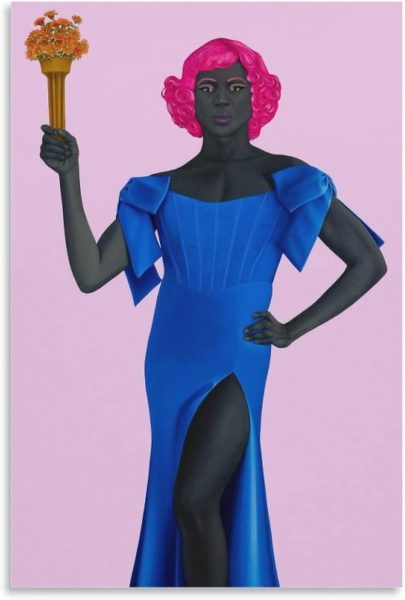
Sherald studied at Baltimore’s Maryland Institute College of Art, which she described as “the best decision I ever made,” during a sold out Q&A on Nov. 2 moderated by the BMA’s director, Asma Naeem. Unfortunately, the subject of censorship and the last-minute decision to move the exhibit to the BMA didn’t come up during the discussion. But Naeem rightly described Sherald as “one of the most important painters of our time.”
“American Sublime,” billed as a mid-career retrospective, features 38 of Sherald’s paintings, including her portraits of former first lady Michelle Obama and Breonna Taylor, along with “Trans Forming Liberty.”
Sherald and Naeem joked throughout the breezy hour-long conversation and reminisced about spending time at MICA and in Baltimore. The artist said she still finds inspiration and even potential portrait subjects in grocery stores and on the streets of Baltimore and New York, where she now lives. Many of the portraits in the exhibit were painted in Baltimore.
Although Sherald and Naeem kept it light and avoided discussing censorship, the one serious and non-negotiable subject Sherald addressed was the paramount importance of integrity. Her insistence on the integrity of the work and the inclusion of trans representation in the exhibit brought her to the difficult decision to pull her work from the Smithsonian. It was a bold and inspiring move in a time when so many public figures, CEOs, and politicians have shown a disappointing and dangerous lack of integrity in the face of an administration that seeks to subvert the Constitution and erode the First Amendment. Sherald stands as a powerful symbol of resistance and, yes, integrity in these dark times. Her refusal to cave to authoritarian impulses and blatant censorship will be remembered for years to come. The nation’s top tech CEOs and congressional leaders should see this exhibit and learn from her brave example.
“American Sublime” is open now through April 5 at the Baltimore Museum of Art and requires a paid ticket for entry. (Admission is free on Thursday evenings and free on Jan. 15 and Feb. 19. The museum is closed Mondays and Tuesdays.) For more information and tickets visit artbma.org.
Galleries
New gallery opening in D.C.
Dandelion Collective exhibition features works by John Von Sauerhoff
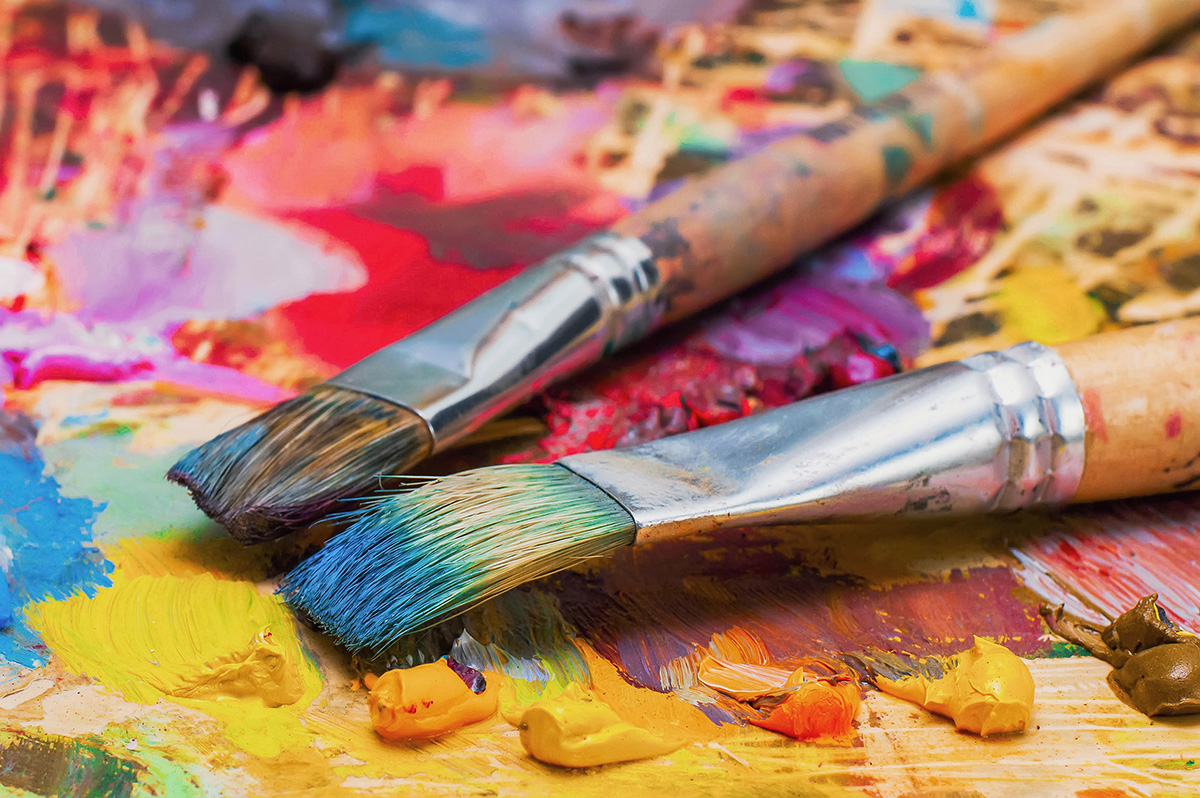
Dandelion Collective, a new space in Columbia Heights for LGBTQ healers and artists, will open on Saturday, Aug. 24 with an opening reception at 2 p.m. at 3417 14th St., N.W.
This first exhibition features the incredible, ethereal artwork of John Von Sauerhoff. His stunning pop surrealist paintings will transport you to another world.
More information is available at dandelioncollectivedc.com/art-gallery.
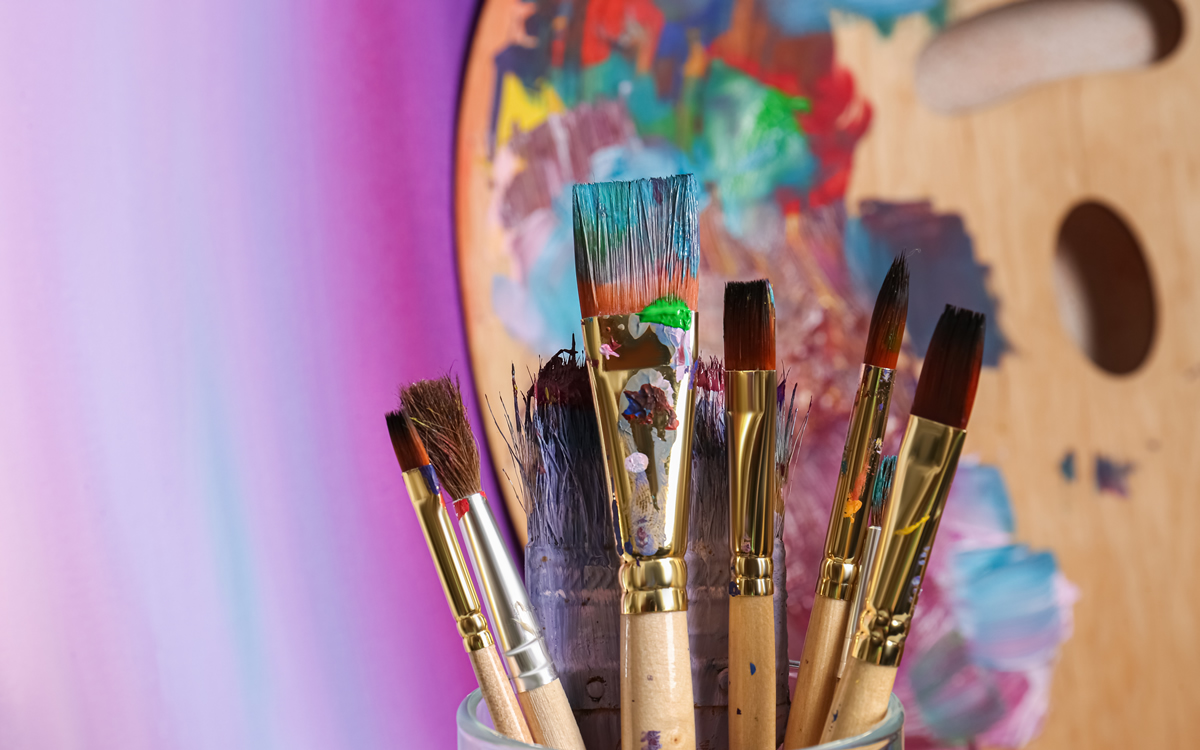
New England artists Caroline Rufo and John Rufo, also known as RufoArt will open an exhibition on Thursday, Aug. 10 at 6 p.m. at Nepenthe Gallery.
The husband-and-wife duo will share their paintings and also talk about their inspirations. Caroline explores the natural beauty, ideas, and systems of power that create her surroundings while John works toward an understanding of art as a representation of singular moments of both immediate presence and a larger context of wholeness.
For more details, visit Nepenthe Gallery’s website.
-

 District of Columbia2 days ago
District of Columbia2 days ago‘Sandwich guy’ not guilty in assault case
-

 Sports2 days ago
Sports2 days agoGay speedskater racing toward a more inclusive future in sports
-

 Celebrity News4 days ago
Celebrity News4 days agoJonathan Bailey is People’s first openly gay ‘Sexiest Man Alive’
-

 Michigan4 days ago
Michigan4 days agoFBI thwarts Halloween terror plot targeting Mich. LGBTQ bars

